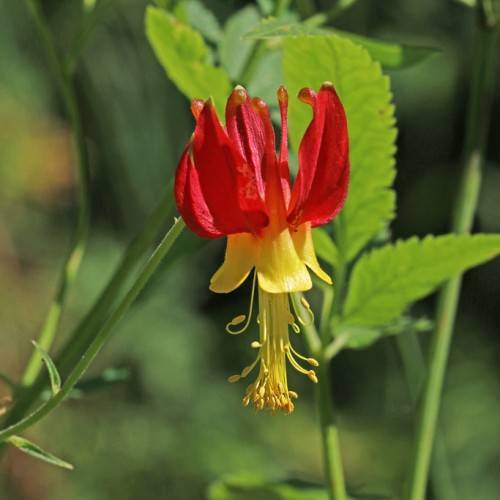
Western Columbine
Aquilegia formosa
Also Known As - Scarlet Columbine,Crimson ColumbineWatering:
Average
Hardiness Zone:
Flowers:
Flowers
Sun:
Sun, Partial Shade
Soil:
Sand
Leaf:
Yes
Growth Rate:
Low
Poisonous To Humans:
Yes
Poisonous To Pets:
Yes
Drought Tolerant:
Yes
Invasive:
Yes
Care Level:
Medium
watering
Spreading Dogbane (Apocynum androsaemifolium) should be watered deeply but infrequently. Water the plant once or twice a month, and give enough water so that the soil is damp to a depth of 6 to 8 inches. Make sure the plant does not get over watered, as this can cause root rot. If the top inch of soil feels dry, the plant needs watering. Avoid watering during hot summer days, instead water in the early morning or late evening to ensure water absorption.
sunlight
Spreading Dogbane (Apocynum androsaemifolium) grows best in full sunlight, with at least 6 hours of direct sunlight each day. This plants requires direct sunlight year-round to perform its best, although some indirect sunlight in shade is welcomed during hot mid-summer months. Additionally, the amount of sunlight varies with the season and depends on the location of the plant. Generally, winter brings lesser hours of daylight, and in summer more hours of daylight contribute to better growth. With that said, 6 hours of sunlight in winter, and even more during the hot summer months, is the optimum amount for this species of plant.
pruning
Spreading Dogbane (Apocynum androsaemifolium) plants should be pruned in mid- to late-summer, when flowering has finished, or during winter dormancy. It is best to prune no more than 25% of the plant material in a single session to minimize stress and damage. Removal of entire stems and branches can be done at any time, but heavier pruning is best done in the summer or winter months. Branches that are thin or sparsely branched should be removed entirely, while thicker ones should be cut back by 1 third to 1 half. Be sure to have sharp, clean pruning equipment as old, untended tools can spread disease.
